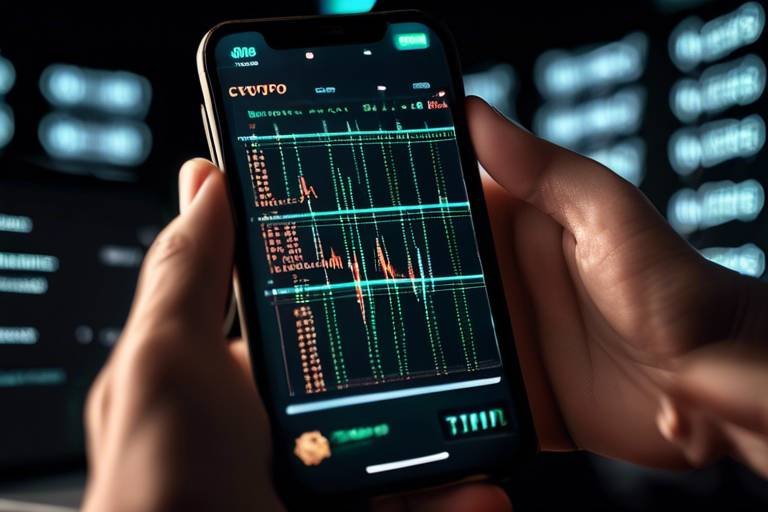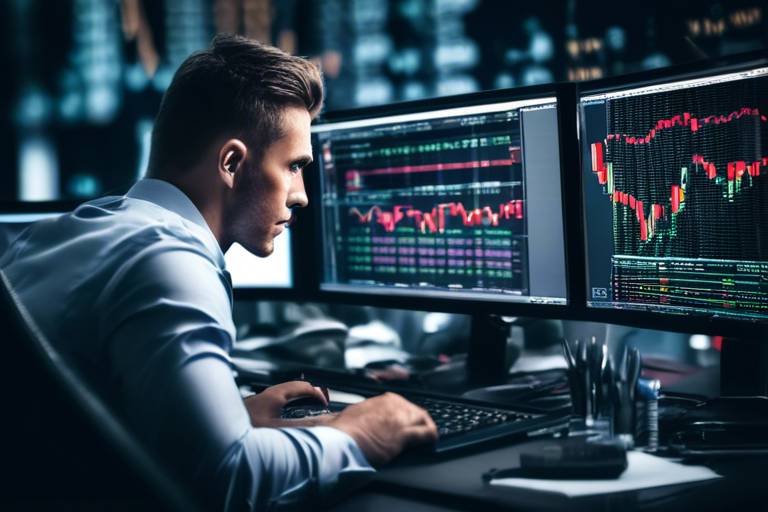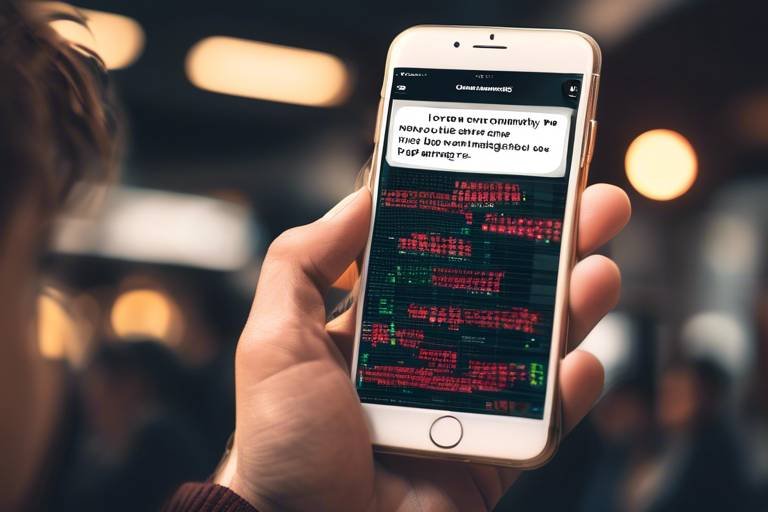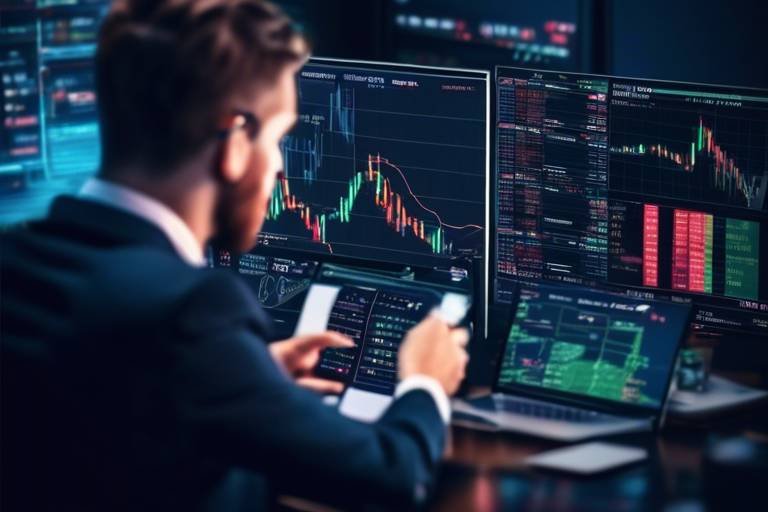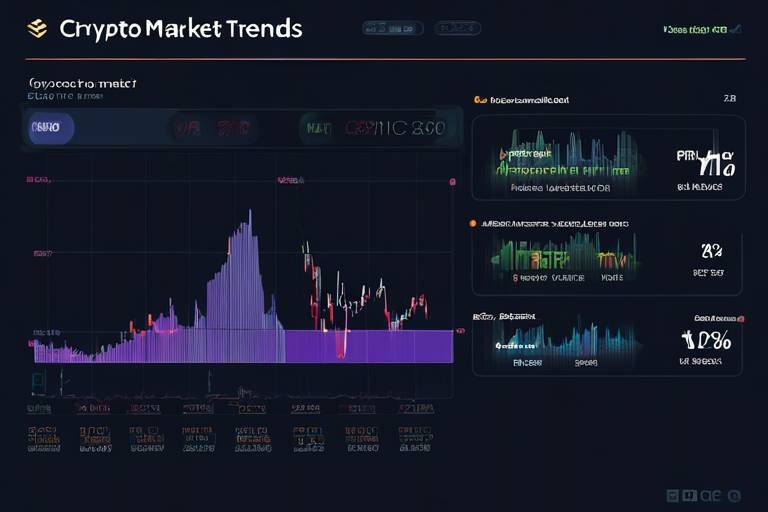The Basics of Crypto Futures Trading
Welcome to the thrilling world of crypto futures trading! If you're curious about how to navigate this complex financial landscape, you're in the right place. In this article, we will explore the fundamental concepts of crypto futures trading, including its mechanics, benefits, risks, and strategies. Understanding these elements is essential for anyone looking to dive into this exciting market.
So, what exactly are crypto futures? Simply put, they are contracts that allow traders to speculate on the future price of cryptocurrencies. Imagine you're betting on whether the price of Bitcoin will rise or fall in the next month. If you think it will go up, you buy a futures contract; if you believe it will drop, you sell one. This unique trading mechanism adds layers of complexity and opportunity, making it crucial to grasp the underlying principles before you start trading.
In the upcoming sections, we will break down the mechanics of crypto futures trading, how to effectively trade them, the benefits they offer, the risks involved, and various strategies you can implement to enhance your trading success. By the end of this article, you should have a solid understanding of crypto futures trading, empowering you to make informed decisions in your trading journey.
Crypto futures are contracts that allow traders to speculate on the future price of cryptocurrencies. This section will delve into how these contracts work and their significance in the trading ecosystem.
Trading crypto futures involves a series of steps that include choosing a platform, analyzing the market, and executing trades. This section will guide you through the trading process step-by-step.
Selecting a reliable trading platform is crucial for success in crypto futures trading. This subsection will discuss the factors to consider when choosing a trading platform.
Security should be a top priority when selecting a trading platform. This part will highlight the essential security features to look for to protect your investments.
A user-friendly interface can significantly enhance your trading experience. This section will explore the importance of platform usability and accessibility.
Successful trading relies on effective market analysis. This subsection will cover various techniques traders use to analyze crypto futures markets.
Crypto futures trading offers several advantages, including leverage and the ability to profit in both rising and falling markets. This section will outline the key benefits that attract traders to this market.
Leverage allows traders to control larger positions with a smaller amount of capital. This part will explain how leverage works in crypto futures and its potential benefits and risks.
Hedging is a risk management strategy that can protect against price fluctuations. This section will discuss how traders can use futures to hedge their positions effectively.
While crypto futures trading can be profitable, it also carries significant risks. This section will examine the potential pitfalls and how traders can mitigate these risks.
The cryptocurrency market is known for its volatility, which can lead to substantial losses. This subsection will explore how volatility impacts futures trading and strategies to manage it.
Liquidation occurs when a trader's position is forcibly closed due to insufficient margin. This section will detail the conditions that lead to liquidation and how to avoid it.
Developing a solid trading strategy is essential for long-term success in crypto futures. This section will present various strategies that traders can implement to improve their chances of profitability.
Trend following is a popular strategy that involves trading in the direction of the market trend. This subsection will explain how to identify and capitalize on trends.
Scalping is a short-term trading strategy aimed at making quick profits. This section will discuss the principles of scalping and how to execute it effectively in crypto futures trading.
- What are the main advantages of trading crypto futures?
Some advantages include the ability to use leverage, the potential for profit in both rising and falling markets, and the ability to hedge against price fluctuations.
- What risks should I be aware of?
Key risks include market volatility, liquidation risks, and the potential for significant losses if trades do not go as planned.
- How can I choose the right platform for trading?
Look for platforms with strong security features, a user-friendly interface, and a good reputation in the trading community.

Understanding Crypto Futures
Crypto futures are financial contracts that allow traders to speculate on the future price of cryptocurrencies without actually owning the underlying asset. Imagine it like placing a bet on whether the price of Bitcoin will rise or fall in the next month. If you believe the price will increase, you would enter a long position, while a belief that it will decrease would lead you to enter a short position. This mechanism offers a unique way to engage with the cryptocurrency market, providing opportunities for profit regardless of market direction.
The mechanics of crypto futures trading are built on the concept of leverage, enabling traders to control larger positions with a fraction of the capital. For instance, if a trader has $1,000 and the leverage offered is 10:1, they can control a position worth $10,000. However, while this amplifies potential profits, it also increases the risk of substantial losses. Therefore, understanding how leverage works is crucial for anyone interested in trading futures.
Another significant aspect of crypto futures is their expiration date. Each futures contract has a specified date on which it expires. Traders must either settle the contract by closing their position or roll it over to a new contract. This feature can lead to various strategies, including holding until expiration to realize gains or losses, or actively trading to capitalize on market fluctuations.
The significance of crypto futures in the trading ecosystem cannot be overstated. They provide a way for traders to hedge against price volatility in the cryptocurrency market. For instance, if a trader holds a significant amount of Bitcoin, they might choose to short Bitcoin futures to protect against potential price drops. This strategy can effectively mitigate risks associated with price fluctuations.
Additionally, futures trading contributes to market liquidity, allowing for quicker transactions and better price discovery. The more participants in the market, the more accurate the pricing becomes, which benefits everyone involved. As a result, crypto futures have become an integral part of the broader cryptocurrency trading landscape, attracting both institutional and retail investors.
In summary, understanding crypto futures is essential for anyone looking to navigate this complex financial landscape. By grasping the fundamentals—such as the mechanics of trading, the role of leverage, and the significance of expiration dates—traders can better position themselves to make informed decisions and potentially capitalize on the opportunities presented by this dynamic market.
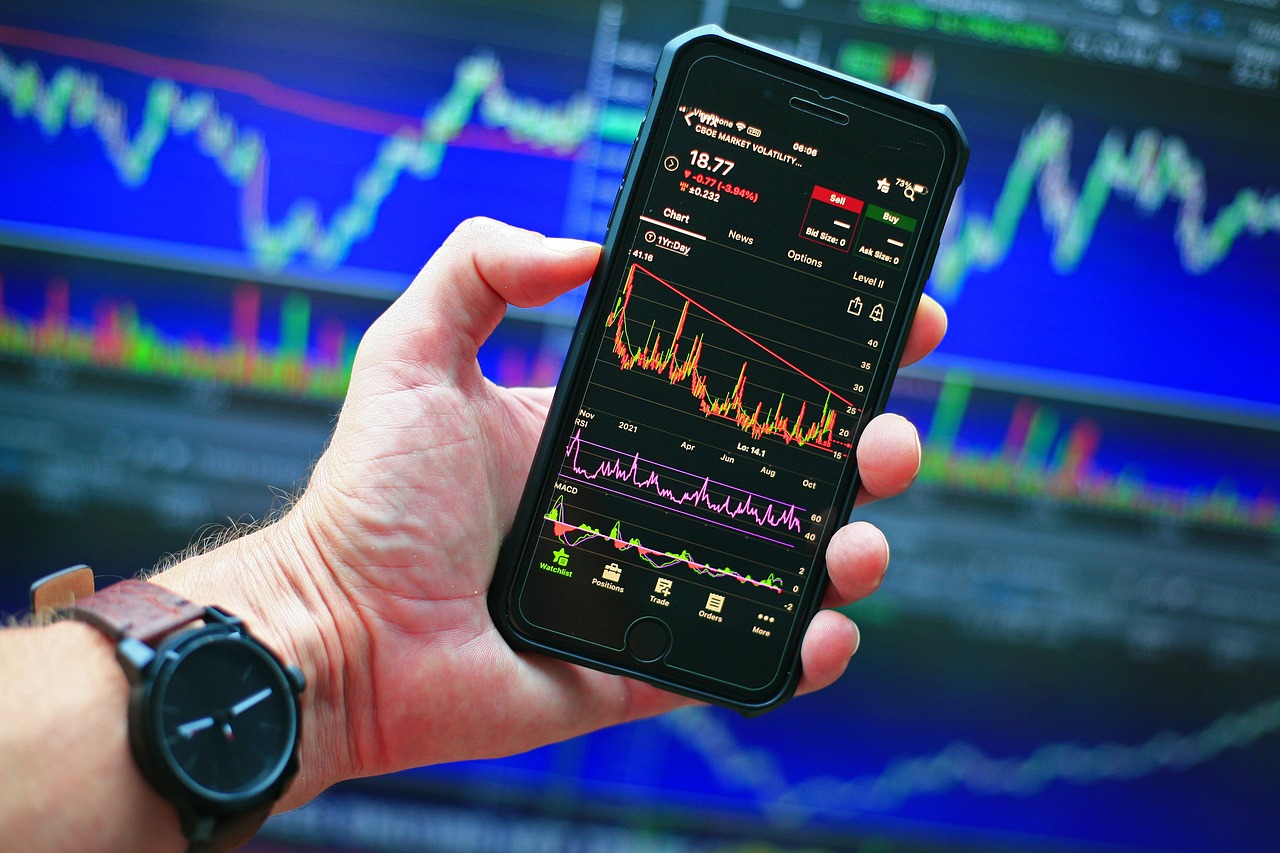
How to Trade Crypto Futures
Trading crypto futures might sound complex at first, but once you break it down into manageable steps, it becomes much easier to understand. Think of it like learning to ride a bike; at first, it seems daunting, but with practice and the right guidance, you'll be cruising in no time. The process typically involves several key stages, starting with choosing a reliable trading platform and moving on to analyzing the market and executing trades.
The first step in this journey is to choose a platform. This is where you'll be doing all your trading, so it's crucial to select one that meets your needs. Look for platforms that are user-friendly and offer a variety of features that can enhance your trading experience. After you've settled on a platform, the next step is to analyze the market. This involves researching the current trends, understanding price movements, and keeping an eye on market news that could affect your trades.
Once you've done your homework, it's time to execute your trades. This is where the real fun begins! You'll need to decide on the size of your position and whether you're going long (betting that the price will go up) or short (betting that it will go down). Remember, in the world of crypto futures, timing is everything. A well-timed trade can lead to significant profits, while a poorly timed one can result in losses.
Here’s a quick overview of the steps involved in trading crypto futures:
- Choose a Trading Platform: Research and select a platform that suits your trading style and offers strong security features.
- Market Analysis: Use technical and fundamental analysis to gauge market conditions and make informed decisions.
- Execute Trades: Decide on your position size and whether to go long or short before executing your trade.
- Monitor Your Positions: Keep an eye on your trades and the overall market to make adjustments as necessary.
It's also important to stay informed about the various trading tools available to you. Many platforms offer features like stop-loss orders, which can help protect your investments by automatically closing a position when it reaches a certain price. This is especially useful in the volatile world of cryptocurrencies, where prices can swing wildly in a short period.
In addition, consider utilizing risk management strategies to safeguard your investments. This might include setting limits on how much you're willing to lose on a trade or diversifying your portfolio to spread out risk. Just like a seasoned sailor knows to adjust their sails in changing winds, a smart trader adapts their strategies based on market conditions.
Finally, always remember that trading crypto futures is not just about making quick profits; it’s about developing a solid understanding of the market and honing your skills over time. Just as a musician practices daily to master their craft, you'll need to dedicate time to learning and improving your trading techniques.
Q: What is the best platform for trading crypto futures?
A: The best platform depends on your specific needs, including security features, user interface, and available trading tools. Research and compare different platforms to find one that suits you.
Q: Can I lose more than my initial investment?
A: Yes, due to the leverage used in futures trading, it is possible to lose more than your initial investment. Always use risk management techniques to protect yourself.
Q: How do I analyze the crypto futures market?
A: Analyze the market using a combination of technical analysis (charts, indicators) and fundamental analysis (news, market trends) to make informed trading decisions.
Q: Is it possible to trade crypto futures with a small amount of money?
A: Yes, many platforms allow trading with small amounts of capital, but be cautious as trading with leverage can amplify both gains and losses.
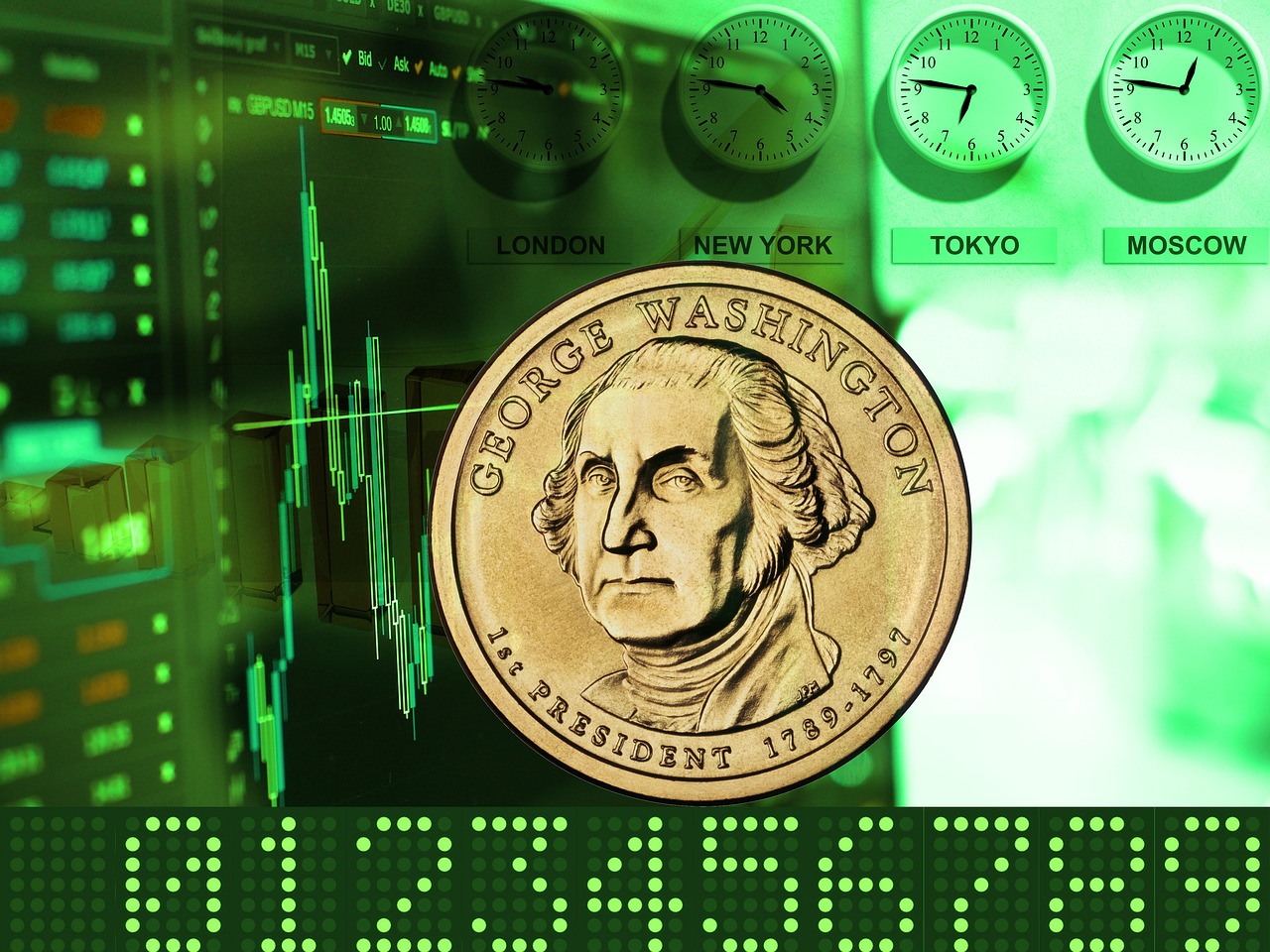
Choosing the Right Platform
When diving into the world of crypto futures trading, one of the most crucial decisions you'll make is choosing the right trading platform. It's akin to selecting the right vehicle for a long road trip; you want something reliable, comfortable, and equipped with all the necessary features. A good platform can make your trading experience seamless, while a poor choice can lead to frustration and lost opportunities. So, what should you look for?
First and foremost, consider the security features. In the ever-evolving landscape of cryptocurrencies, security should be at the top of your checklist. Look for platforms that offer robust security measures, such as two-factor authentication (2FA), cold storage for funds, and a transparent history of security practices. A platform with a solid reputation in terms of security will give you peace of mind, allowing you to focus on trading rather than worrying about potential hacks.
Next, think about user experience. A user-friendly interface can significantly enhance your trading experience. Imagine trying to navigate a complicated map while driving; it can be stressful and lead to wrong turns. Similarly, a platform that is intuitive and easy to use will help you execute trades more efficiently. Look for features like customizable dashboards, easy navigation, and responsive customer support. A platform that prioritizes user experience will allow you to concentrate on your trading strategies rather than getting bogged down by technical difficulties.
Additionally, consider the variety of trading tools offered by the platform. Some platforms provide advanced charting tools, real-time data analysis, and even automated trading options. These tools can be invaluable for making informed trading decisions. For example, if you're a technical trader, having access to comprehensive charting software can help you identify trends and patterns that are essential for your trading strategy.
Lastly, don’t overlook the fees and commissions associated with the platform. Different platforms have varying fee structures, which can significantly impact your profitability. Ensure you understand the costs involved, including trading fees, withdrawal fees, and any hidden charges. A transparent fee structure will help you avoid unpleasant surprises down the road.
In summary, choosing the right platform for crypto futures trading is a multifaceted decision that requires careful consideration of security, user experience, available tools, and fee structures. Take your time to research and compare different platforms to find the one that best suits your trading style and needs. Remember, the right platform can be the difference between a successful trading journey and a frustrating experience.
- What are the key features to look for in a trading platform? Look for security features, user-friendly interfaces, variety of trading tools, and transparent fee structures.
- How can I ensure the security of my investments? Choose platforms that offer two-factor authentication, cold storage, and have a good track record of security.
- Are there platforms that cater specifically to beginners? Yes, many platforms offer educational resources and simplified interfaces for beginners.

Security Features
When it comes to crypto futures trading, security features are paramount. Imagine walking into a bank with a vault that has no locks; you wouldn't feel safe, right? The same principle applies to trading platforms. A reliable trading platform should incorporate robust security measures to protect your investments and personal data. Here are some critical security features to consider:
- Two-Factor Authentication (2FA): This feature adds an extra layer of security by requiring not only a password but also a second form of verification, such as a text message code or an authenticator app.
- Cold Storage: Platforms that store the majority of their assets in offline wallets are less vulnerable to hacking attempts. Cold storage is akin to keeping your valuables in a safe rather than on your kitchen counter.
- Encryption: Look for platforms that use advanced encryption protocols to safeguard your data. This ensures that even if someone intercepts your information, they can't read it.
- Regular Security Audits: A trustworthy platform will undergo regular security audits and disclose the results. This transparency builds trust and shows that the platform is committed to maintaining high security standards.
In addition to these features, it’s crucial to keep your own security practices in check. For instance, using strong, unique passwords and being cautious about phishing attempts can go a long way in protecting your assets. Think of it as locking your doors and windows at night; it’s a simple yet effective way to keep unwanted visitors at bay.
Ultimately, the security of your trading platform is not just about the features they offer but also about how you engage with those features. Always stay informed about the latest security practices and remain vigilant. By doing so, you can enjoy the thrill of crypto futures trading without the constant worry of security breaches.
What is two-factor authentication (2FA) and why is it important?
Two-factor authentication adds an extra layer of security by requiring a second form of verification in addition to your password. It is important because it significantly reduces the risk of unauthorized access to your account.
How can I ensure my crypto assets are safe?
To ensure your crypto assets are safe, choose a platform with strong security features, use 2FA, keep your passwords secure, and consider using cold storage for your assets.
What should I do if I suspect my account has been compromised?
If you suspect your account has been compromised, immediately change your password, enable two-factor authentication, and contact the platform's support team for assistance.
Are all trading platforms secure?
Not all trading platforms are created equal. It’s essential to research and choose a platform that prioritizes security and has a good reputation in the industry.

User Experience
When it comes to crypto futures trading, can make or break your trading journey. Imagine stepping into a complex maze; if the paths are unclear, you’re likely to get lost. Similarly, a trading platform with a convoluted interface can leave traders feeling frustrated and overwhelmed. A seamless user experience is essential for both novice traders and seasoned investors. It ensures that you can navigate the platform easily, execute trades swiftly, and manage your portfolio without unnecessary hiccups.
One of the key aspects of user experience is interface design. A well-designed interface should be intuitive, allowing you to find the tools and information you need without a treasure hunt. Look for platforms that offer customizable dashboards, where you can arrange your favorite features and tools according to your trading style. This personalization can enhance your trading efficiency, making it easier to react to market changes promptly.
Moreover, the accessibility of the platform is crucial. In the fast-paced world of crypto trading, every second counts. You want a platform that is not only available on desktop but also has a robust mobile app. This flexibility allows you to monitor your trades and execute orders on the go. Imagine being able to capitalize on a sudden market shift while enjoying your morning coffee—now that’s convenience!
Another important factor is the availability of educational resources. A good trading platform should offer tutorials, articles, and videos that help you understand how to use its features effectively. This is especially important for beginners who might feel overwhelmed by the complexities of futures trading. A platform that invests in educating its users demonstrates a commitment to their success.
In addition, consider the customer support offered by the platform. Effective customer service can be a lifesaver when you encounter issues or have questions. Look for platforms that provide multiple support channels—such as live chat, email, and phone support. Quick and reliable customer service can turn a potential headache into a minor bump in the road.
To summarize, a great user experience in crypto futures trading encompasses several elements:
- Intuitive interface for easy navigation
- Customizable dashboards to suit individual trading styles
- Accessibility through both desktop and mobile platforms
- Educational resources to aid user understanding
- Responsive customer support to assist with any issues
In conclusion, investing time in choosing a platform that prioritizes user experience can significantly enhance your trading efficiency and enjoyment. After all, the easier it is to trade, the more time you can spend focusing on what really matters—making informed decisions and growing your portfolio!

Market Analysis Techniques
When it comes to crypto futures trading, understanding the market is essential. Just like a sailor needs to read the stars and winds to navigate the ocean, traders must analyze various factors to make informed decisions. There are several techniques that traders can use to analyze the crypto futures market effectively. These techniques can help you identify potential trading opportunities and manage risks effectively.
One of the most common methods is **technical analysis**. This approach involves studying price charts and indicators to predict future price movements. Traders often use tools like moving averages, Relative Strength Index (RSI), and Bollinger Bands to gauge market trends. For instance, if you notice that the price of Bitcoin is consistently trading above its 50-day moving average, it may indicate a bullish trend, suggesting a good time to buy. Conversely, if the price is below this average, it could signal a bearish trend, prompting traders to consider selling or shorting their positions.
Another important technique is **fundamental analysis**. This method looks at the underlying factors that affect the value of cryptocurrencies. Factors such as market demand, regulatory news, technological developments, and macroeconomic trends can significantly influence prices. For example, if a major country announces that it will adopt Bitcoin as legal tender, the demand could skyrocket, leading to a price increase. Conversely, negative news, such as a crackdown on crypto exchanges, could lead to a decline in prices.
In addition to these methods, traders often employ **sentiment analysis**. This technique involves gauging the overall mood of the market by analyzing social media, news articles, and forums. Tools like Google Trends and sentiment analysis platforms can help traders understand whether the market is feeling bullish or bearish. For instance, if a surge in positive tweets about Ethereum is observed, it might be a signal to enter a long position.
Moreover, traders can also utilize **on-chain analysis**, which involves examining blockchain data to understand market dynamics. This includes metrics like transaction volume, active addresses, and network hash rates. By analyzing these factors, traders can gain insights into the health of a cryptocurrency and its potential for price movement. For example, a rising number of active addresses could indicate increasing interest and usage, potentially leading to higher prices.
To summarize, successful crypto futures trading relies heavily on effective market analysis techniques. By combining technical, fundamental, sentiment, and on-chain analysis, traders can develop a comprehensive understanding of the market and make better-informed decisions. Just remember, the key to navigating the volatile waters of crypto futures is to stay informed and adaptable, much like a captain adjusting their sails to the changing winds.
Frequently Asked Questions
- What is the best analysis method for crypto futures trading? It depends on your trading style. Many traders use a combination of technical and fundamental analysis for the best results.
- How can I stay updated on market sentiment? Following social media platforms, news websites, and using sentiment analysis tools can help you gauge market sentiment effectively.
- Is on-chain analysis worth it? Absolutely! On-chain analysis provides unique insights that can help traders understand market dynamics beyond just price movements.
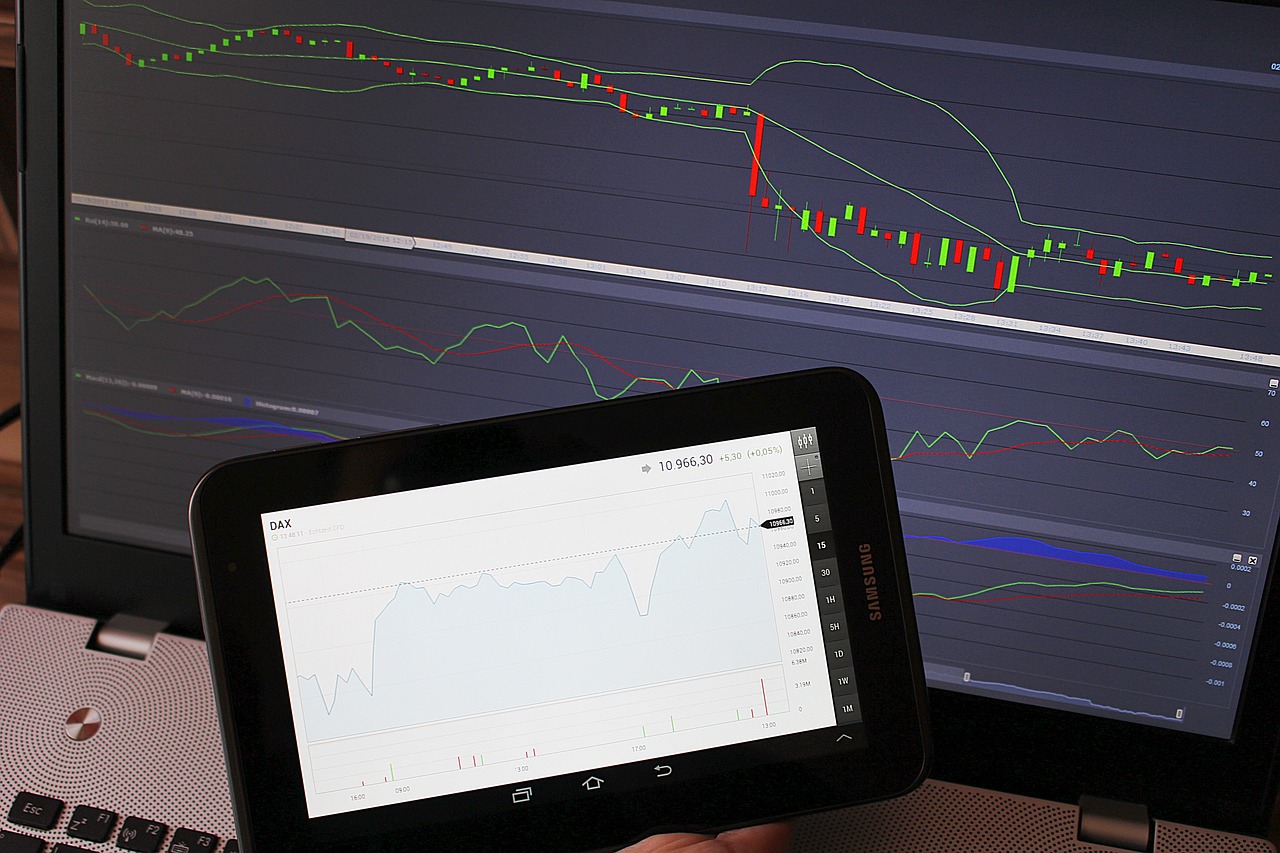
Benefits of Crypto Futures Trading
When it comes to trading in the exciting world of cryptocurrencies, crypto futures trading stands out for several reasons. One of the most compelling benefits is the ability to use leverage, which allows traders to control larger positions with a relatively small amount of capital. Imagine being able to amplify your trading power, much like using a lever to lift a heavy object; this can lead to significantly higher returns on your investments. However, while leverage can boost profits, it’s crucial to remember that it can also magnify losses, making risk management a vital part of trading.
Another notable advantage of crypto futures trading is the opportunity to profit in both bull and bear markets. Unlike traditional investing, where you typically make money only when prices rise, futures contracts allow you to bet on price declines as well. This flexibility means that savvy traders can capitalize on market movements regardless of the direction. For instance, if you anticipate that Bitcoin will drop in value, you can sell a futures contract to lock in profits, even as others may be losing money.
Furthermore, crypto futures trading offers a level of liquidity that can be quite appealing. Liquidity refers to how easily an asset can be bought or sold without causing a significant impact on its price. In the world of crypto, high liquidity ensures that you can enter and exit trades quickly, which is especially important in a market known for its rapid price fluctuations. This means that you can execute your trading strategies without unnecessary delays, allowing for a more dynamic trading experience.
| Benefit | Description |
|---|---|
| Leverage | Control larger positions with a smaller amount of capital, increasing potential returns. |
| Profit in Both Directions | Ability to trade on rising and falling markets, maximizing profit opportunities. |
| High Liquidity | Quickly enter and exit trades without significant price impacts, enhancing trading efficiency. |
Moreover, futures trading provides a unique way to hedge against price volatility. For instance, if you own a large amount of a particular cryptocurrency, you can use futures contracts to protect your investment from potential downturns. This strategy acts like an insurance policy, safeguarding your portfolio from unexpected market movements. By locking in prices through futures, you can mitigate risks and stabilize your financial outlook.
In addition to these benefits, the transparency of the futures market is another key advantage. Most crypto futures exchanges operate on a public ledger system, which means that all transactions are recorded and can be audited. This level of transparency fosters trust among traders and helps to maintain a fair trading environment.
To sum it up, the benefits of crypto futures trading are numerous and can be highly advantageous for those willing to navigate the complexities of the market. From leveraging your investments to hedging against risks and enjoying high liquidity, futures trading opens up a plethora of opportunities for both novice and experienced traders alike. Just remember, with great power comes great responsibility—always approach trading with a solid strategy and a clear understanding of the risks involved.
- What is crypto futures trading? Crypto futures trading involves contracts that allow traders to speculate on the future price of cryptocurrencies.
- How does leverage work in crypto futures? Leverage allows traders to control larger positions with a smaller amount of capital, potentially increasing profits but also risks.
- Can I profit in a declining market? Yes, crypto futures trading allows you to profit from both rising and falling markets.
- What is the risk of liquidation in futures trading? Liquidation occurs when a trader's position is closed due to insufficient margin, leading to potential losses.
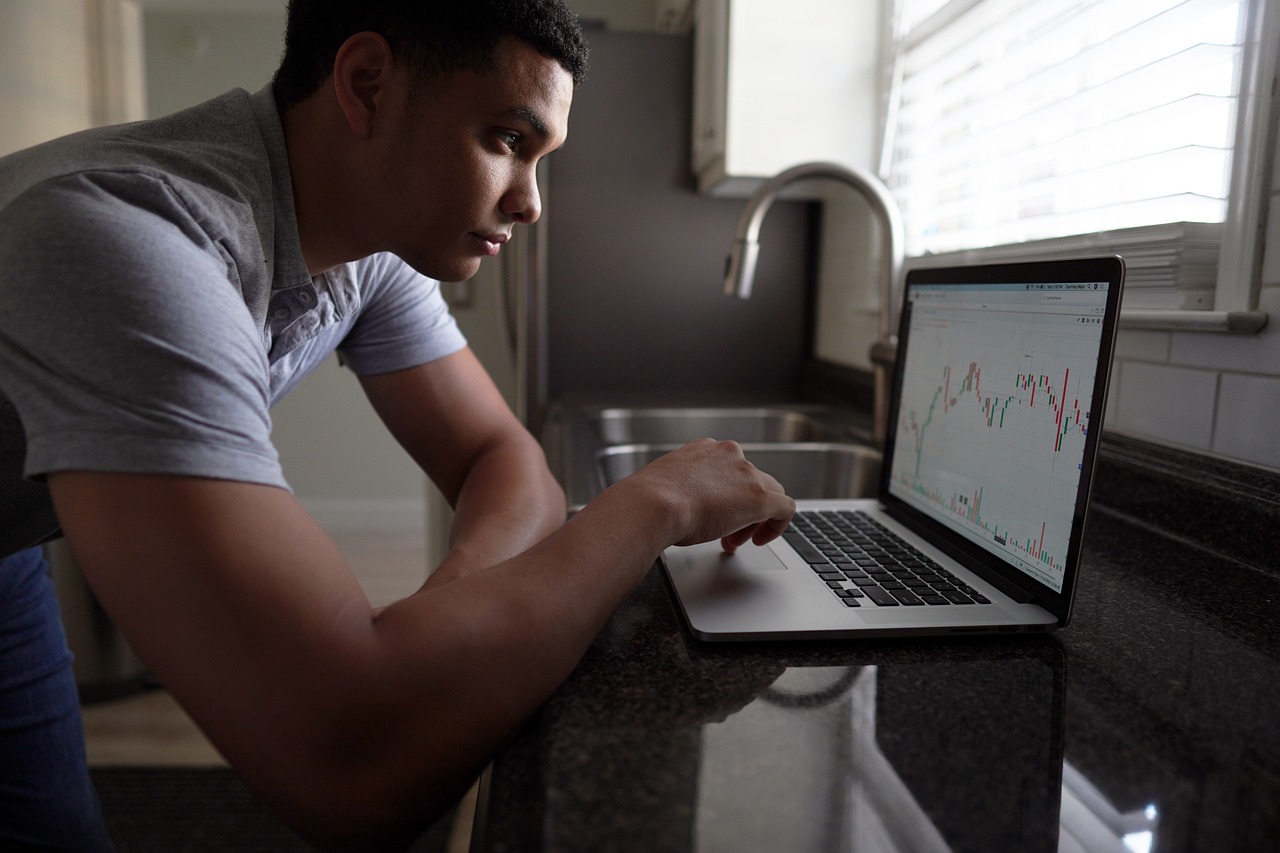
Leverage in Trading
Leverage is a powerful tool in the world of trading, especially in the realm of crypto futures. It allows traders to control larger positions than their actual capital would typically permit. Imagine it as a magnifying glass that amplifies both potential profits and potential losses. For instance, if you have $1,000 and use a leverage of 10:1, you can control a position worth $10,000. This means that even a small price movement can lead to significant gains or losses. However, it’s crucial to understand that while leverage can boost your profits, it can also amplify your risks.
When trading with leverage, you need to be acutely aware of the margin requirements. The margin is the amount of money you need to deposit to open a leveraged position. If the market moves against you, and your account balance falls below the required margin, you may face a margin call, which means you’ll need to deposit more funds to maintain your position or risk having it liquidated. This situation can be quite stressful, especially in the volatile crypto market where prices can swing dramatically in a short period.
To help illustrate how leverage works, consider the following example:
| Initial Investment | Leverage Ratio | Controlled Position | Price Movement (%) | Profit/Loss |
|---|---|---|---|---|
| $1,000 | 10:1 | $10,000 | 10% | $1,000 Profit |
| $1,000 | 10:1 | $10,000 | -10% | -$1,000 Loss |
As shown in the table, with an initial investment of $1,000 and a leverage ratio of 10:1, a 10% increase in the market price leads to a $1,000 profit. Conversely, a 10% decrease results in a $1,000 loss, effectively wiping out your initial investment. This stark contrast highlights the double-edged sword nature of leverage.
For those considering leverage in crypto futures trading, it’s essential to adopt a disciplined approach. Here are some tips to manage leverage effectively:
- Start Small: If you’re new to leveraged trading, begin with lower leverage ratios to minimize risk.
- Use Stop-Loss Orders: Implementing stop-loss orders can help protect your capital by automatically closing your position at a predetermined loss level.
- Stay Informed: Keep abreast of market trends and news that could impact your positions. Knowledge is power in the volatile world of crypto.
In conclusion, while leverage can significantly enhance your trading potential, it carries inherent risks that must not be overlooked. A thorough understanding of how it works, combined with sound risk management practices, can help you navigate the thrilling yet treacherous waters of crypto futures trading.

Hedging Strategies
When it comes to navigating the unpredictable waters of crypto futures trading, serve as a lifebuoy, providing traders with a way to manage risk effectively. Hedging is essentially a protective measure, allowing traders to offset potential losses in their primary position by taking an opposite position in the futures market. This technique is particularly useful in the highly volatile world of cryptocurrencies, where prices can swing dramatically in a matter of hours.
To understand how hedging works, let’s consider a simple analogy. Imagine you own a beautiful house in a neighborhood that is rapidly appreciating in value. However, you’re worried about a potential market downturn that could devalue your property. To hedge against this risk, you might consider purchasing homeowner’s insurance. Similarly, in crypto futures trading, traders can buy futures contracts to secure their current positions against adverse price movements.
There are several common hedging strategies that traders can employ when dealing with crypto futures:
- Direct Hedging: This involves taking an opposite position in the futures market to offset losses from an existing position. For instance, if you own Bitcoin and fear a price drop, you could sell Bitcoin futures contracts to hedge against that decline.
- Spread Trading: This strategy involves taking two positions simultaneously, one long and one short, in correlated assets. By doing this, traders can profit from the price difference while minimizing risk.
- Options Hedging: Traders can also use options contracts to hedge their positions. For example, purchasing put options allows traders to sell their assets at a predetermined price, providing a safety net if prices fall.
While hedging can significantly reduce risk, it’s essential to understand that it does not eliminate it entirely. Traders should also consider the costs associated with hedging, such as transaction fees and potential margin requirements. Moreover, hedging strategies can sometimes limit potential profits, as the gains from the primary position may be offset by losses in the hedged position.
In conclusion, implementing effective hedging strategies can be a game-changer for traders in the crypto futures market. By carefully assessing market conditions and choosing the right hedging techniques, traders can protect their investments and navigate the turbulent waters of cryptocurrency trading with more confidence.
Q: What is the main purpose of hedging in crypto futures trading?
A: The primary purpose of hedging is to reduce the risk of adverse price movements in an asset. By taking an opposite position in the futures market, traders can offset potential losses from their primary investments.
Q: Can hedging guarantee profits in crypto trading?
A: No, hedging does not guarantee profits. While it can help mitigate losses, it can also limit potential gains if the market moves favorably.
Q: What are some common hedging strategies used in crypto futures trading?
A: Common hedging strategies include direct hedging, spread trading, and options hedging. Each of these methods allows traders to manage risk in different ways.
Q: Are there any costs associated with hedging?
A: Yes, there are costs associated with hedging, such as transaction fees and margin requirements. Traders should consider these costs when implementing hedging strategies.
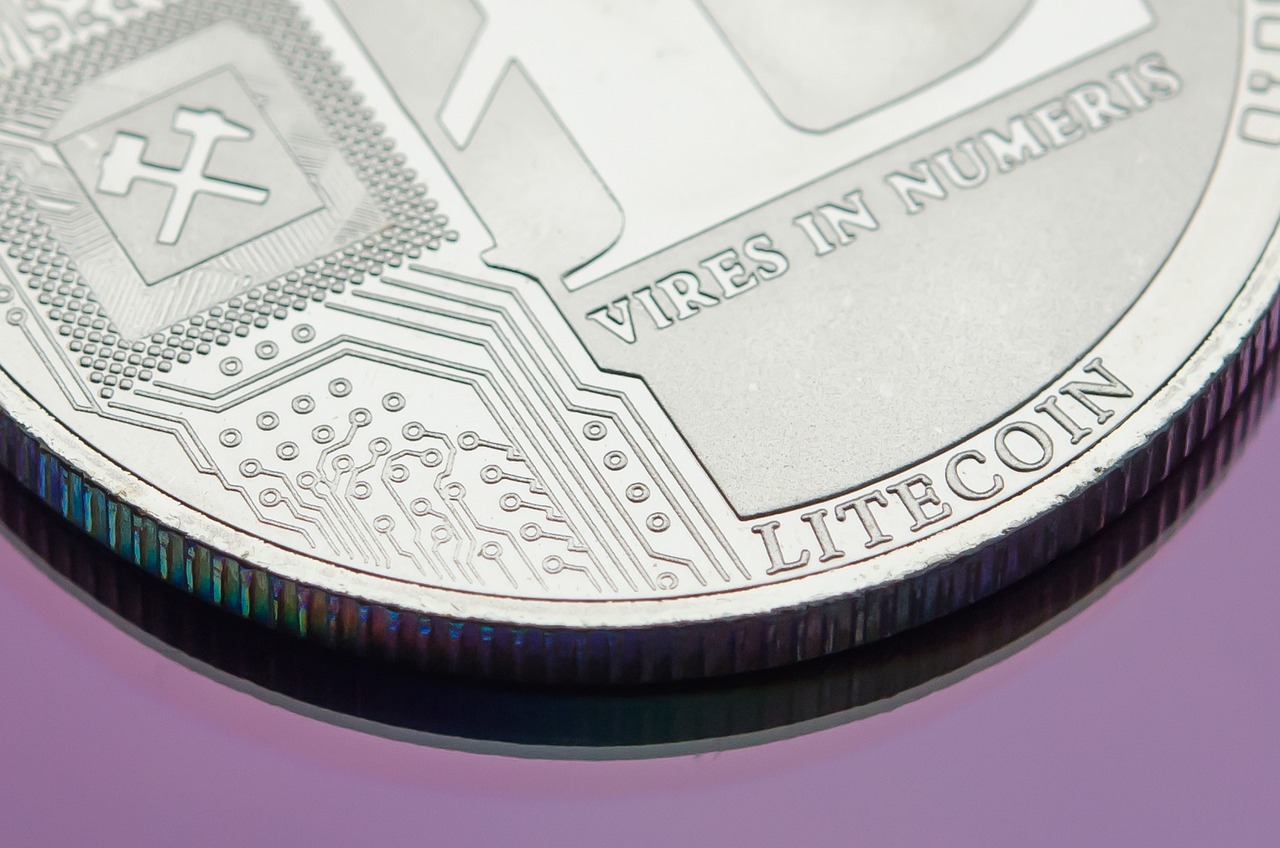
Risks of Crypto Futures Trading
While crypto futures trading can be an enticing avenue for profit, it is essential to recognize that it comes with its own set of risks. Understanding these risks is crucial for anyone looking to navigate the turbulent waters of this financial landscape. The cryptocurrency market is notorious for its extreme volatility, which can lead to significant gains but also substantial losses. In this section, we will explore the primary risks associated with crypto futures trading, including volatility risks and liquidation risks, and how traders can mitigate these challenges.
The cryptocurrency market is akin to a roller coaster ride—thrilling and exhilarating, but also fraught with ups and downs. This volatility can lead to rapid price changes within a short period, making it difficult for traders to predict market movements accurately. For instance, a sudden news event or regulatory change can cause prices to skyrocket or plummet in a matter of hours. This unpredictability can result in substantial financial losses if traders do not manage their positions effectively.
To navigate the volatility, traders often employ various strategies, such as:
- Setting Stop-Loss Orders: These orders automatically close a position at a predetermined price, limiting potential losses.
- Diversifying Investments: By spreading investments across multiple cryptocurrencies, traders can reduce their exposure to any single asset.
- Using Technical Analysis: Analyzing historical price movements can help traders identify potential entry and exit points.
Another significant risk in crypto futures trading is liquidation. This occurs when a trader's position is forcibly closed due to insufficient margin, which is the collateral required to maintain a leveraged position. Imagine you’re on a tightrope, balancing your investments. If the market moves against you and your margin falls below the required threshold, the trading platform will liquidate your position to cover the losses. This can happen unexpectedly, leaving traders with little time to react.
To avoid liquidation, traders should:
- Maintain Adequate Margin: Always ensure that your account has sufficient funds to cover your positions, especially during volatile market conditions.
- Use Leverage Wisely: While leverage can amplify profits, it can also magnify losses. It’s crucial to use it judiciously.
- Regularly Monitor Positions: Keeping a close eye on market movements and your positions can help you make timely decisions to avoid liquidation.
In summary, while crypto futures trading offers exciting opportunities, it is not without its risks. Understanding volatility and liquidation risks, along with implementing effective risk management strategies, can help traders protect their investments and navigate this complex market more successfully.
Q: What are crypto futures?
A: Crypto futures are contracts that allow traders to speculate on the future price of cryptocurrencies, enabling them to profit from both rising and falling markets.
Q: How can I mitigate risks in crypto futures trading?
A: Traders can mitigate risks by using stop-loss orders, diversifying their investments, maintaining adequate margin, and regularly monitoring their positions.
Q: What is liquidation in crypto futures trading?
A: Liquidation occurs when a trader's position is forcibly closed due to insufficient margin, often resulting in significant losses.
Q: Is crypto futures trading suitable for beginners?
A: While it can be lucrative, crypto futures trading carries substantial risks. Beginners should educate themselves thoroughly and consider starting with smaller investments.

Volatility Risks
When diving into the world of crypto futures trading, one cannot ignore the that come hand-in-hand with this exhilarating market. The cryptocurrency landscape is notorious for its price swings, which can occur in a matter of minutes. Imagine riding a roller coaster; one moment you're at the peak, and the next, you're plummeting down! This unpredictability can lead to substantial losses if traders aren't adequately prepared.
The essence of volatility is that it can create opportunities, but it can also lead to disastrous outcomes. For instance, a sudden price surge might seem like a golden ticket to profits, but if a trader is caught off guard, they could quickly find themselves on the losing end. Understanding the dynamics of volatility is crucial for anyone looking to thrive in crypto futures.
Here are some key points to consider regarding volatility risks in crypto futures trading:
- Market Sentiment: The cryptocurrency market is heavily influenced by news, social media, and public sentiment. A single tweet from a prominent figure can send prices soaring or crashing.
- Liquidity Issues: During times of high volatility, liquidity can dry up, making it challenging to execute trades at desired prices.
- Emotional Trading: The fear of missing out (FOMO) or panic selling can lead to impulsive decisions, exacerbating losses.
To effectively manage these volatility risks, traders can adopt several strategies. One effective approach is to set stop-loss orders to automatically close positions at predetermined price levels. This helps to limit potential losses and protect investments. Additionally, staying informed about market trends and news can provide valuable insights into potential price movements.
Another technique is to diversify trading strategies. Instead of putting all your eggs in one basket, consider spreading your investments across different cryptocurrencies or trading pairs. This can help mitigate risks associated with sudden price fluctuations in a single asset.
Remember, while volatility can be daunting, it can also be harnessed for profit. By understanding the risks involved and implementing effective risk management techniques, traders can navigate the wild waters of crypto futures trading with greater confidence.
1. What is volatility in crypto futures trading?
Volatility refers to the degree of variation in trading prices over time. In crypto futures, it indicates how much the price of a cryptocurrency can change rapidly, posing risks and opportunities for traders.
2. How can I manage volatility risks?
Traders can manage volatility risks by using stop-loss orders, diversifying their portfolios, and staying informed about market trends and news.
3. Why is the cryptocurrency market so volatile?
The cryptocurrency market is influenced by various factors, including market sentiment, regulatory news, technological developments, and macroeconomic trends. These factors can lead to rapid price changes.
4. Can volatility be beneficial for traders?
Yes, volatility can create opportunities for profit. Skilled traders can capitalize on price swings by employing effective trading strategies and risk management techniques.

Liquidation Risks
When it comes to crypto futures trading, one of the most daunting aspects that traders face is the risk of liquidation. This occurs when a trader's position is automatically closed by the exchange due to insufficient margin to maintain the trade. Imagine you're on a rollercoaster, and just when you think you're in control, the ride takes a sudden drop—this is what liquidation feels like in the trading world. It can happen faster than you can blink, and the consequences can be severe, leading to significant financial losses.
Liquidation risks are particularly pronounced in the volatile world of cryptocurrencies, where prices can swing dramatically within minutes. To illustrate this, consider the following factors that contribute to liquidation risks:
- High Leverage: Many traders use leverage to amplify their potential gains. However, higher leverage also means a lower margin of error. A small price movement against your position can trigger a liquidation.
- Market Volatility: Cryptocurrencies are notoriously volatile. Sudden market shifts can lead to rapid price changes, putting your position at risk of liquidation.
- Margin Call: If your account equity falls below a certain threshold, the exchange may issue a margin call, requiring you to deposit more funds. Failure to do so could result in liquidation.
To avoid the dreaded liquidation scenario, traders should implement several risk management strategies. Here are some essential tips:
| Tip | Description |
|---|---|
| Use Lower Leverage | Opt for lower leverage to reduce the risk of liquidation. This allows for more room to maneuver in the market. |
| Set Stop-Loss Orders | Implementing stop-loss orders can help you limit potential losses and protect your capital from extreme market movements. |
| Monitor Market Conditions | Stay updated on market trends and news. Being aware of potential volatility can help you make informed decisions. |
In conclusion, understanding liquidation risks is crucial for anyone involved in crypto futures trading. By being aware of the factors that lead to liquidation and taking proactive measures, traders can better protect their investments and navigate the unpredictable waters of the cryptocurrency market.
- What is liquidation in crypto futures trading? Liquidation occurs when a trader's position is automatically closed by the exchange due to insufficient margin to maintain the trade.
- How can I avoid liquidation? To avoid liquidation, use lower leverage, set stop-loss orders, and monitor market conditions closely.
- What happens when my position is liquidated? When your position is liquidated, you lose the funds that were allocated to that trade, which can result in significant financial loss.

Strategies for Success
When it comes to crypto futures trading, having a solid strategy is akin to having a compass in uncharted waters. Without it, you might find yourself lost amidst the waves of volatility and uncertainty. There are several strategies that traders can adopt to enhance their chances of success, and understanding these can make all the difference between a flourishing portfolio and a sinking ship.
One of the most popular strategies is trend following. This approach involves identifying the prevailing market direction and aligning your trades accordingly. Think of it as riding a wave; when the tide is in your favor, you can catch a ride that propels your profits upward. To effectively implement trend following, traders often use technical indicators such as moving averages or trend lines to spot potential entry and exit points. By staying attuned to market momentum, you can make informed decisions that capitalize on upward or downward trends.
On the flip side, there's the scalping technique, which is all about quick wins. If trend following is like surfing, then scalping is akin to sprinting. This strategy focuses on making numerous small trades throughout the day to accumulate profits. Scalpers aim to take advantage of minor price fluctuations, often holding positions for just minutes or seconds. To execute this strategy effectively, traders need to be highly disciplined and possess a keen sense of timing. It's essential to use a platform that supports fast execution and low fees, as every second counts in this high-speed trading environment.
Moreover, combining these strategies can also yield fruitful results. For instance, a trader might use trend following to identify a favorable market condition and then apply scalping techniques to capitalize on short-term movements within that trend. This hybrid approach allows traders to leverage the strengths of both strategies, maximizing their profit potential while minimizing risks.
However, regardless of the strategy you choose, risk management should always be at the forefront of your trading plan. Setting stop-loss orders is crucial to protect your capital from unexpected market shifts. Additionally, diversifying your portfolio by trading multiple cryptocurrencies can help mitigate risks associated with individual assets. Just as a well-balanced meal is essential for good health, a diversified trading portfolio can safeguard you from the unpredictable nature of the crypto market.
In the end, the key to success in crypto futures trading lies in continuous learning and adaptation. Markets are dynamic, and what works today might not work tomorrow. Staying informed about market trends, news, and technological advancements will equip you with the knowledge necessary to adjust your strategies accordingly. Embrace the journey, and remember that every trader faces challenges—it's how you navigate those challenges that will define your success.
- What is the best strategy for beginners in crypto futures trading? Beginners should start with trend following, as it allows for a more structured approach to understanding market movements.
- How much capital do I need to start trading crypto futures? While there is no set amount, starting with a small capital allows you to learn without risking too much.
- Is it possible to lose all my investment in crypto futures trading? Yes, due to the high volatility of the crypto market, it's possible to incur significant losses, which is why risk management is essential.
- Can I use leverage in crypto futures trading? Yes, leverage is commonly used in crypto futures trading; however, it can amplify both gains and losses.

Trend Following
Trend following is a powerful trading strategy that many traders swear by, and for good reason! Imagine you're riding a wave at the beach; you want to go with the flow rather than against it. In the world of crypto futures, this means identifying and capitalizing on market trends. The essence of trend following is simple: if the market is going up, you buy, and if it’s going down, you sell. But how do you spot these trends? Well, it all comes down to a mix of technical analysis, market sentiment, and a bit of intuition.
To effectively follow trends, traders often rely on various indicators and tools. Some of the most popular include:
- Moving Averages: These smooth out price data to identify the direction of the trend over a specific period. For instance, a 50-day moving average can help you see whether the price is generally moving up or down.
- Relative Strength Index (RSI): This momentum oscillator measures the speed and change of price movements. An RSI above 70 might indicate an overbought market, while below 30 could suggest an oversold market.
- MACD (Moving Average Convergence Divergence): This indicator helps traders spot changes in the strength, direction, momentum, and duration of a trend.
But wait, it’s not just about jumping on a trend and hoping for the best! Successful trend following requires a disciplined approach. You need to set clear parameters for when to enter and exit a trade. This means establishing your risk tolerance and determining your stop-loss levels. Think of it like setting a safety net while you’re up in the air; it gives you peace of mind and protects you from unexpected falls.
Moreover, it’s crucial to remember that not every trend will be a winning one. The crypto market is notorious for its volatility, and trends can change in the blink of an eye. Therefore, a good practice is to stay updated on market news and events that could impact prices. For instance, regulatory announcements or technological advancements can create significant shifts in market sentiment.
In summary, trend following is about aligning yourself with the market's direction and riding that wave as long as possible. It's about being aware, being prepared, and most importantly, being patient. So, whether you're a newbie or a seasoned trader, embracing the trend-following strategy could potentially enhance your trading success in the exciting world of crypto futures.
What is trend following in crypto futures trading?
Trend following is a trading strategy that involves buying or selling based on the direction of price trends in the market. Traders aim to capitalize on upward or downward movements by entering positions that align with the prevailing trend.
How can I identify trends in the crypto market?
Trends can be identified using various technical indicators such as moving averages, RSI, and MACD. Additionally, analyzing chart patterns and market sentiment can help traders spot potential trends.
Is trend following suitable for all traders?
While trend following can be effective, it may not be suitable for everyone. It requires discipline, patience, and a good understanding of market dynamics. Traders should assess their risk tolerance and trading style before adopting this strategy.
What are the risks associated with trend following?
The primary risks include sudden market reversals, which can lead to losses if positions are not managed properly. Additionally, relying solely on technical indicators without considering fundamental factors can be risky in the volatile crypto market.
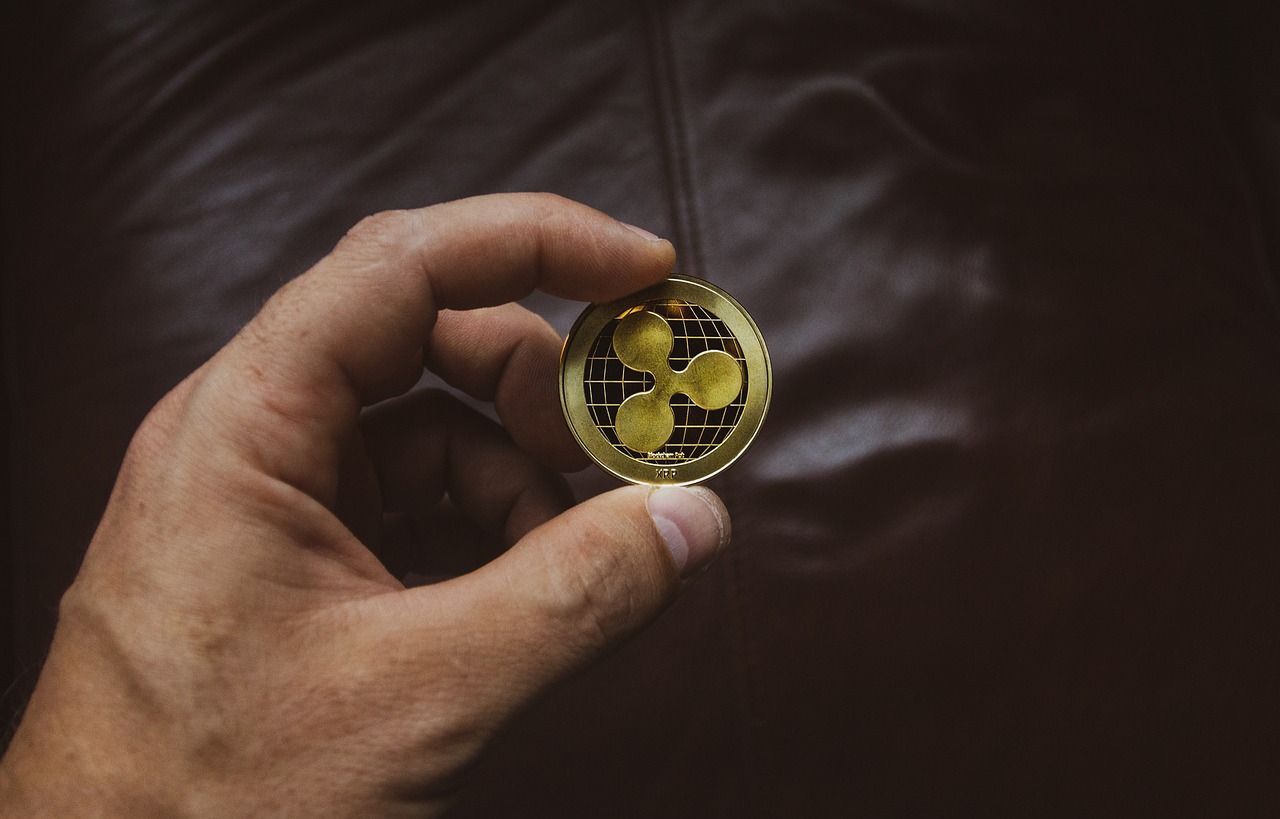
Scalping Techniques
Scalping is a popular trading strategy in the world of crypto futures that focuses on making quick, small profits from numerous trades throughout the day. Imagine a sprinter dashing from one point to another, grabbing small rewards along the way, rather than running a marathon for a single prize. That’s the essence of scalping! The key to successful scalping lies in the ability to analyze market movements swiftly and make decisions in a fraction of a second. But how do you actually execute this strategy effectively?
First, you need to understand that scalping requires a solid grasp of market dynamics and the ability to react quickly to price fluctuations. Traders typically look for assets that are highly liquid, meaning there are enough buyers and sellers in the market to ensure that trades can be executed promptly without significant price changes. This liquidity is crucial for scalpers, as they need to enter and exit positions rapidly.
Moreover, using technical analysis is essential for scalping. Traders often rely on indicators such as moving averages, Relative Strength Index (RSI), and Bollinger Bands to identify entry and exit points. For instance, a common technique is to look for a situation where the price touches the lower Bollinger Band, suggesting a potential upward movement. By combining these indicators with real-time news analysis, traders can make informed decisions that maximize their chances of success.
Another critical aspect of scalping is risk management. Since this strategy involves numerous trades throughout the day, it’s vital to set strict stop-loss orders to limit potential losses. A well-defined risk-reward ratio can also help traders maintain discipline and avoid emotional trading. For example, a common approach is to aim for a 1:2 risk-reward ratio, meaning for every dollar risked, the trader aims to make two dollars. This strategy can help ensure that even if some trades do not go as planned, the overall profitability remains intact.
To illustrate how scalping works in practice, consider the following table that highlights key elements of a typical scalping strategy:
| Element | Description |
|---|---|
| Time Frame | Usually 1-minute to 5-minute charts for quick trades |
| Indicators | Moving Averages, RSI, Bollinger Bands |
| Risk Management | Setting stop-loss orders and maintaining a favorable risk-reward ratio |
| Execution Speed | Quick entry and exit to capture small price movements |
In conclusion, scalping can be an exhilarating and profitable strategy for those willing to put in the time and effort to master it. The fast-paced nature of this approach can be both thrilling and challenging, making it essential for traders to stay disciplined and focused. As with any trading strategy, continuous education and practice are crucial for success. So, are you ready to lace up your running shoes and sprint into the world of scalping?
- What is scalping in crypto futures trading? Scalping is a short-term trading strategy that involves making numerous trades throughout the day to capture small price movements.
- What tools do scalpers use? Scalpers typically use technical indicators like moving averages, RSI, and Bollinger Bands to make informed trading decisions.
- Is scalping suitable for beginners? While scalping can be profitable, it requires a good understanding of market dynamics and quick decision-making skills, which might be challenging for beginners.
- How can I manage risks while scalping? Implementing stop-loss orders and maintaining a favorable risk-reward ratio are essential for effective risk management in scalping.
Frequently Asked Questions
- What are crypto futures?
Crypto futures are contracts that allow traders to speculate on the future price of cryptocurrencies. They enable you to bet on whether the price will go up or down, offering opportunities for profit regardless of market direction.
- How do I start trading crypto futures?
To start trading crypto futures, you need to choose a reliable trading platform, create an account, and deposit funds. Once you're set up, you can begin analyzing the market and executing trades based on your strategy.
- What should I look for in a trading platform?
When selecting a trading platform, prioritize security features, user experience, available trading tools, and customer support. A good platform should offer a secure environment for your investments and an intuitive interface to enhance your trading experience.
- What are the benefits of trading crypto futures?
Trading crypto futures offers several benefits, including the ability to use leverage, which allows you to control larger positions with less capital. Additionally, you can profit in both rising and falling markets, making it a versatile trading option.
- What risks should I be aware of?
Crypto futures trading carries risks such as market volatility, which can lead to significant losses, and liquidation risks, where your position may be forcibly closed if you don't maintain sufficient margin. It's crucial to understand these risks and implement strategies to mitigate them.
- What is a hedging strategy?
A hedging strategy is a risk management approach that traders use to protect against price fluctuations. By taking a position in the futures market that offsets potential losses in the spot market, you can shield your investments from adverse movements.
- How can I manage volatility risks?
To manage volatility risks in crypto futures trading, consider setting stop-loss orders, diversifying your portfolio, and using technical analysis to make informed decisions. Staying updated on market trends can also help you anticipate and react to price changes.
- What is trend following?
Trend following is a trading strategy where you buy or sell based on the current market trend. By identifying the direction of the trend, you can capitalize on price movements, increasing your chances of profitability in crypto futures trading.
- What is scalping in crypto futures?
Scalping is a short-term trading strategy that involves making quick trades to capture small price movements. This technique requires a keen eye for market fluctuations and the ability to execute trades rapidly to maximize profits.





